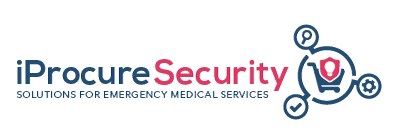483Terms
Help to improve our database
We are continuously collecting common terms used by the Emergency Medical Services practitioners across Europe. Help us improve our content and fill out the online form. If you are not able to find what you are looking for, please let us know by sending us a message through our contact page.
Your feedback is important for us and it will be fed into our Database for the EMS glossary.
Add new EMS termTo unify the communication and knowledge exchange between the emergency medical teams across Europe iProcureSecurity seeks to translate the identified EMS terms in all consortium languages.
That is why the project encourages everyone willing to contribute, to suggest and add missing terminology translation.
Add new translationiProcureSecurity Glossary
Organization and management of responsibilities and related resources for addressing all aspects of an emergency, covering in particular the phases of preparedness, response and rehabilitation and involves plans and institutional arrangements for relevant stakeholders.
Dedicated facility to answer emergency calls immediately, to identify callers' needs and to dispatch the necessary resources wherever and whenever an emergency need occurs.
A comprehensive system which provides the arrangements of personnel, facilities, and equipment for the effective, coordinated, and timely delivery of health and adequate and specialized services to victims of sudden illness or injury. It is a system that provides emergency medical care. Once it is activated by an incident that causes serious illness or injury, the focus of EMS is emergency medical care of the patient(s). High-quality EMS is a major factor of quality in any healthcare system.
It consists of the scene including casualties and bystanders, EMCC with appropriate communication capacities, ambulances with effective equipment and personnel and hospital emergency services. A thorough knowledge of infrastructure, service delivery, coverage, and information flow are required to determine if the EMS Ecosystem is adequate to meet the health needs of a community. The EMS Ecosystem is a system comprising all interactions among people, vehicles, equipment, training, rules and regulations in the field.
Technologies used in the context of occupational health and safety, referring to rescue and emergency services that provide medical response to injured or ill people at the scene of the accident.
The EMS system encompasses a spectrum of care characterized by dedicated medical facilities at both the pre-hospital and in-hospital levels. It has to be organized in such a way as to include all necessary services—such as accurate triage, initial assessment, prompt resuscitation, efficient and effective medical management, and transport of emergency cases to definitive care.
Training is the process of learning the skills that are needed for a particular job or activity. EMS calls for continuous medical education including basic and advanced certification programs, paper and digital materials, training tools, training centres, trainers, post-graduate courses and short courses for all EMS personnel and professionals (physician, paramedic, emergency medicine technician, nurse, driver and technical), AR, VR and MR training, online training, etc.
A specially trained medical technician certified to provide basic emergency services (as cardiopulmonary resuscitation) before and during transportation to a hospital.
Healthcare provided on-scene at a medical emergency or major incident, and during transfer of patients to definitive care facilities
Emergency calls mean calls to duty, including, but not limited to, communications from citizens, police dispatches, and personal observations by peace officers of inherently dangerous situations that demand an immediate response on the part of a peace officer.

